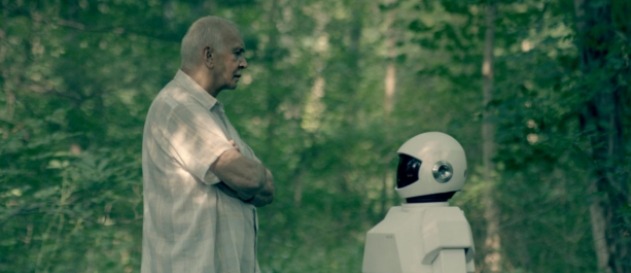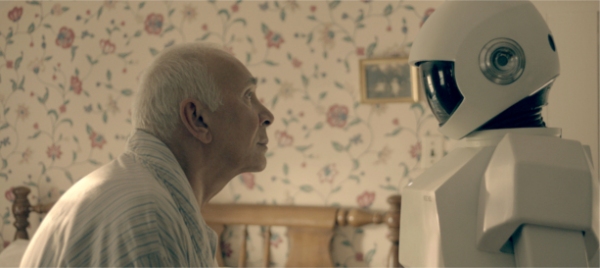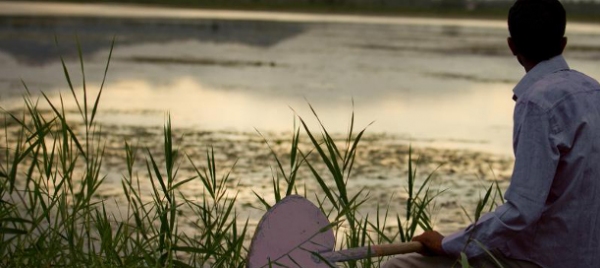
A robot helps an elderly man in the "near future" of upstate New York; a rural boatman in the lake region of conflict-ravaged Kashmir learns about environmental sustainability.
While Robot & Frank and Valley of Saints—two films supported by the Sloan Foundation that recently premiered at Sundance—couldn't be more different in story and style, these disparate projects raise surprisingly similar concerns about traditional ways versus new technologies, the future of life on earth, and science's role, and our own, in shaping that destiny.

In Robot & Frank, veteran actor Frank Langella stars as a retired jewel thief and second-story man who has grown increasingly cantankerous and forgetful in his old age. When his adult son buys him a caretaker robot, Frank initially resists his new-fangled computerized companion. After he realizes that the advanced machine can pick locks, a new friendship is forged. But what exactly does that futuristic relationship entail?
As director Jake Schreier put it in a recent phone interview: "What are the limits and advantages of that relationship? And what does the human relationship supply that the robot can't?”
For research, Schreier and screenwriter Christopher Ford studied cutting-edge robotics, and the new wave of elder-care robots coming out of the U.S. and Japan, such as Honda's Asimo and Toyota's Partner robot and Boston Dynamics' animal-based designs. Ford says the level of technology in the script was "far beyond" what engineers considered possible. Rather, the script was "influenced by the kinds of questions we'll be asking about robot use," he explains. "Is it more humanizing to be able to use technology to interact, or do we just end up only interacting with technology?"
It was also essential for Schreier and Ford that their robot be more realistic—neither the kindly No. 5 of Short Circuit nor the malevolent HAL 9000 of 2001: A Space Odyssey, and avoiding the cliché of the machine that miraculously takes on human traits.
"Instead of the robot magically 'coming alive' in the end," says Ford, "crying a single tear that makes its head blow up, I wanted it to be important to the plot that the robot was just a robot. He was a tool that Frank used to steal."
In this way, Robot & Frank becomes about how the fuddy-duddy Frank embraces technology, as a means to commit first-degree robbery and revitalize his deteriorating mind. But it's also about how technology allows the character to come to grips with those realities and take responsibility for his actions.

Though set half a world away in contemporary Kashmir, Valley of Saints also focuses on an old-fashioned protagonist unexpectedly confronting the world of science, and finding it to be a catalyst for change. Gulzar is a traditional boatman who works on Kashmir's famous Dal Lake. Together with his friend Afzal, he hopes to escape the area's political tumult for a better life. But after he meets Asifa, a Western-trained female scientist who is studying the deterioration of the lake, he decides to stay and work toward preserving his community, both socially and ecologically.
"I wanted to explore this concept of resilience," says writer-director Musa Syeed. "The science really helped me understand that change can be viewed not only as a disruption. But there's also a way to dynamically adapt to change."
While researching the area, Syeed learned that there have been many attempts to solve the environmental crises surrounding Dal Lake, which has been plagued by sewage, and silt polluting its waters. One of the solutions offered is to relocate people from the lake into other parts of the city. But Syeed was more interested in community-based methods and using new tools to "empower the locals to take care of their own ecosystem, and to realize their full responsibility," he says.
In the film, for instance, Gulzar eventually builds a compost toilet—which requires little water and helps keep waste from contaminating the lake. It's a small effort, but one that signals a major moment of transformation for the character.
A compost toilet may be a far cry from a robot, but both films ultimately show technological and scientific changes as constructive and self-empowering. As Syeed says, "I have a very hopeful perspective about how science can be used, especially in traditional communities."
But for all the scientific background, both Robot & Frank and Valley of Saints are also shrewd in avoiding facts and figures or technological jargon in favor of more human stories.
Syeed spent a lot of time researching Dal Lake, spending a summer there living with the boatmen and talking to scientists, scholars and environmental activists. He also brought on renowned lake expert Steve Carpenter from the University of Wisconsin-Madison to consult on the screenplay. But as he got closer to production, and political violence in the region became more intense and the situation more volatile, he dropped that initial script, which included far more overt scientific references—the lead female was originally an English-speaking American scientist—and dwelled more on the characters and their urgent circumstances, such as Gulzar's struggles with the military crackdown
"I think it helped the film," says Syeed. "Science can be seen as this blunt object forced into a story. But it didn't have to be and I wanted to find a way to talk about the bigger issues in a way that fit in with the film's lyrical feel. That was part of the balance to strike. And I think we were able to do it in a way where it doesn't feel like it's advocacy or it's a social issue film or self-righteous or preachy, but fits in an organic way."
Similarly, despite the decade Ford spent researching robotics, he finally chose to be more speculative with his film's sci-fi elements, instead focusing "more about the ideas and possibilities of technology than anything specific," he says. "I never got too bogged down in detail."
"It was really about taking one major conceit," adds Schreier, referring to the robot in Frank's life. "But it becomes more of a human drama. And any good science fiction film will do that."
Indeed, both Robot & Frank and Valley of Saints may use scientific elements, but they are mainly about people and relationships, and what science can—or can't—do for our selves and our communities.
As Schreier says, "In the end, we're certainly more interested in the characters than making a statement about the future."
TOPICS